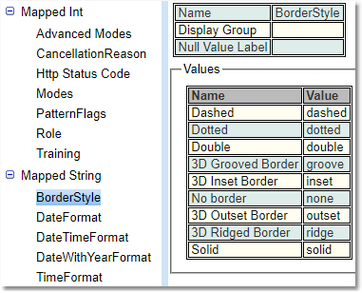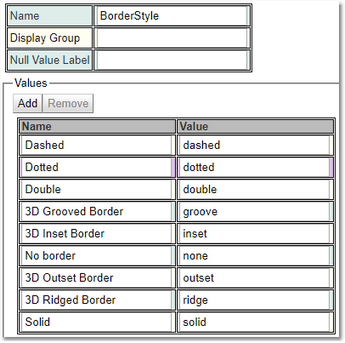Mapped Strings
A Mapped String is similar in concept to a Mapped Integer, but instead of storing an integer in the database, a text value is stored instead. This means that a Mapped String is a mapping from one set of strings to another set of strings. When a String property is created on a BiskitDef, you can indicate that it should be constrained to contain values from a Mapped String. Then, when a user edits such a property, they will see a drop-down that lists the labels defined in the Mapped String, although the value stored in the database will be the associated text value.
Mapped Strings are similar to String Enumerations, in that they both store values as text, and they both generate a drop-down selection list. Mapped Strings are the preferred mechanism though, because by decoupling the displayed labels from the values stored in the database, it makes things very easy it you ever want to change the way values are displayed to users. This is why String Enumerations are deprecated, and may be removed in a future version of Calpendo.
Here is an example of a Mapped String defined in the database:
To add new values press the Edit button and then the Add button, the new entry will appear at the bottom, set the name of enumeration and the value to store with that name. Then press Save. Use the Display Group to bring related items together in the same group to make finding them easier.


